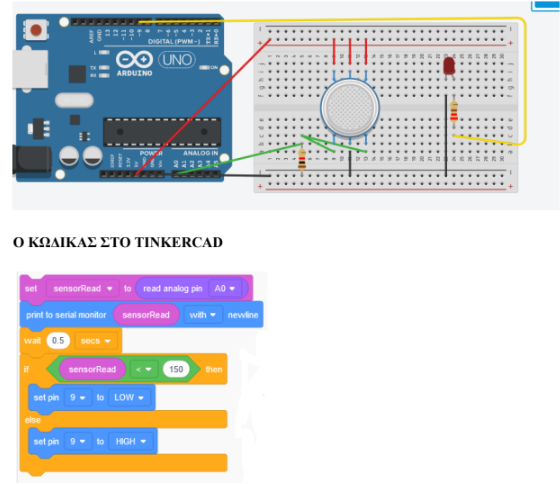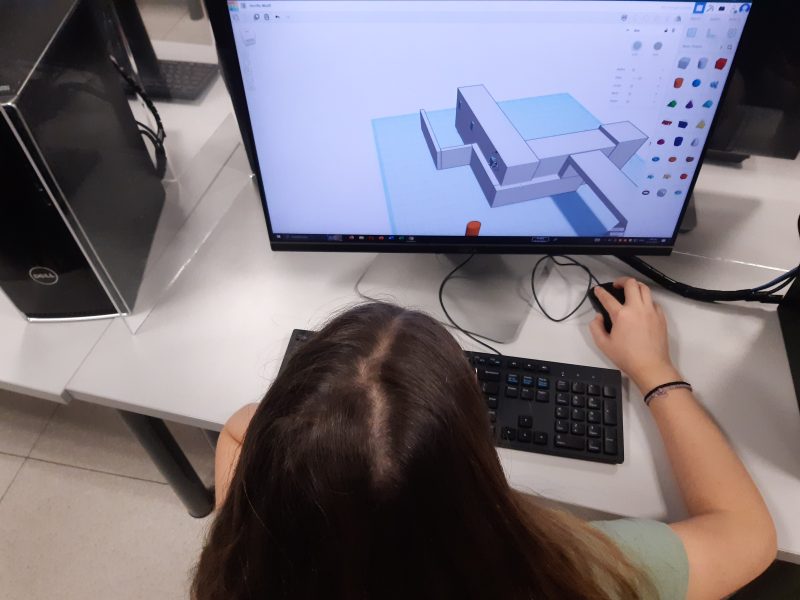Greece School Page
Science
Exploring Mars
In this engaging educational activity, fifth-grade
students embark on an exciting journey to create their own Mars
exploration game using the Scratch programming language. They
will employ their computer skills, logical thinking, and
mathematical knowledge to design a game where a Mars rover
collects rocks while avoiding traps on the Martian surface. As
they navigate through this creative process, students will
develop essential 21st-century skills, including computer
handling, internet research, programming thinking, analytical
and computational thinking, critical thinking, and decision-
making. This activity aligns with the school curriculum for fifth-
grade students and enhances their understanding of informatics
while providing an opportunity for interactive learning and
problem-solving.
Estimated Reach: 30 students.
- Desktop
Gas Sensor with Arduino Learning Scenario
Imagine creating a gas sensor that can detect harmful gases like
carbon monoxide (CO) and carbon dioxide (CO2) in the air. In
this learning scenario, designed for 10 to 11-year-old students
with basic knowledge of electronics and programming, we
embark on a journey to build such a sensor using Arduino
technology.
The motivation behind this project is not just about creating a
gadget; it's about real-life problem-solving. The students are
inspired to measure these gases, not only for educational
purposes but also to make a positive impact on their
environment. The goal is simple: detect high gas concentrations,
signaling when safety measures such as wearing masks or
evacuating an area are necessary.
Implementation Report Template
Mycenean history
In the"Mycenaean Age" learning scenario, students embark on an
immersive journey into the past, exploring the historical context of
the Mycenaean age. This educational adventure is designed to
foster a multidisciplinary approach, encompassing Science,
Technology, Engineering, Arts, and Mathematics (STEAM).
To participate, students should have a basic understanding of 3D
design, having completed a few introductory lessons in Tinkercad.
Throughout the scenario, students are encouraged to ponder real-
life questions, such as how to effectively find and assess
information, collaborate efficiently, and harness technology for
enhanced learning and presentation skills.This scenario aims to
provide students with knowledge about the historical context of
the Mycenean age, including its political and social systems, as
well as its architecture and culture. It also focuses on developing
skills such as 3D design, creating AR books and quizzes, and using
various ICT tools. The scenario is designed for 12-13-year-old
students.
Estimated Reach: 100 students
Wind Turbine
Elina Stamelou's educational scenario, "Optimal Performance
Wind Turbines"; offers a comprehensive learning experience for
16-year-old high school students. Over seven teaching periods,
students delve into the realms of 3D design, aerodynamics,
biomimetics, circuits, programming, and augmented reality (AR)
book creation.
The central problem posed is the need for efficient wind turbines
in the face of the global energy crisis. Students are tasked with
designing wind turbines with aerodynamic shapes inspired by
biomimetics to reduce air resistance and increase rotation speed.
This multifaceted scenario aligns with engineering, technology,
and mathematics-science domains, enhancing students' skills in
these areas.
The scenario fosters a STEAM-focused approach, enabling
students to discover their abilities in 3D design, programming,
circuit design, and presentation skills. It serves as a valuable
exploration of potential career paths in programming, design, or
engineering. Cooperative learning, specifically pair programming,
is employed to encourage critical thinking, communication, and
collaboration skills among students.
Throughout the scenario, students progress through activities like
3D design using Onshape, creating AR presentations with ARTutor,
and developing Arduino circuits. The final evaluation is based on
students' e-portfolios, where they upload their work to track
progress and results.
Estimated Reach: Approximately 25 students in the 10th grade.
Scenario
Implementation Report Template




